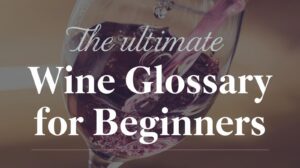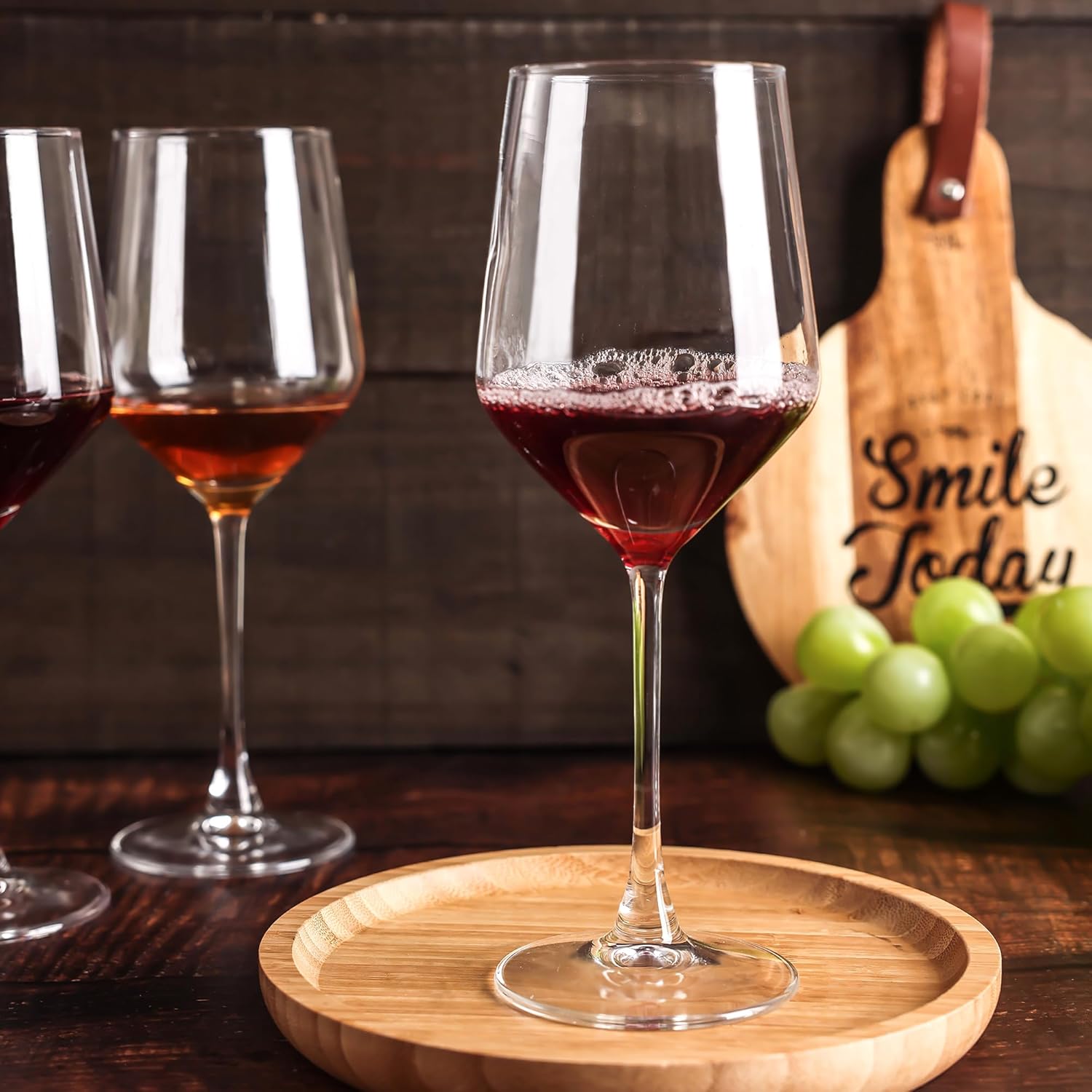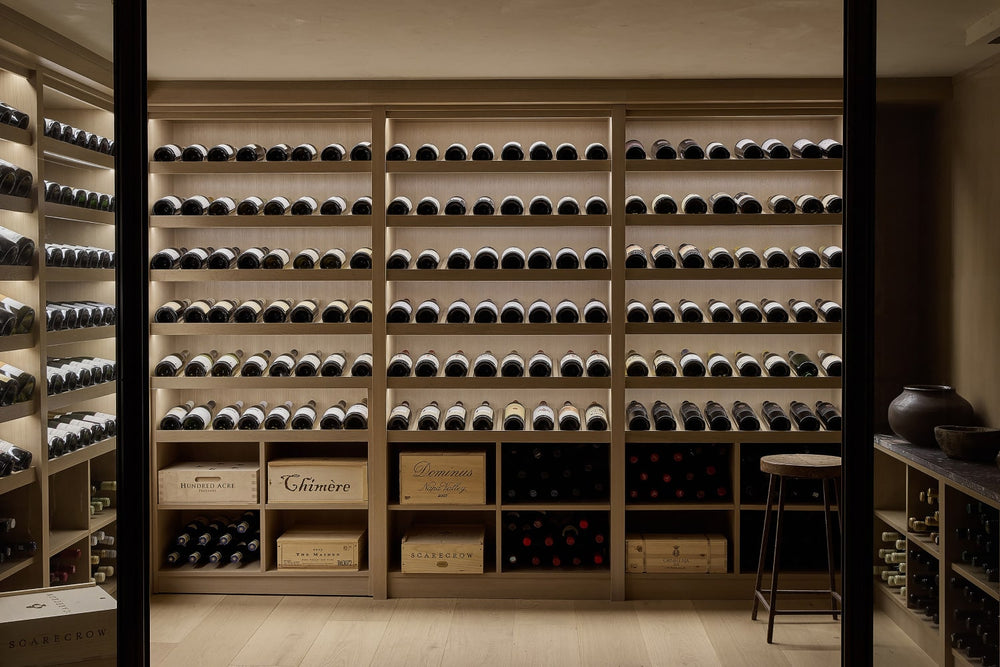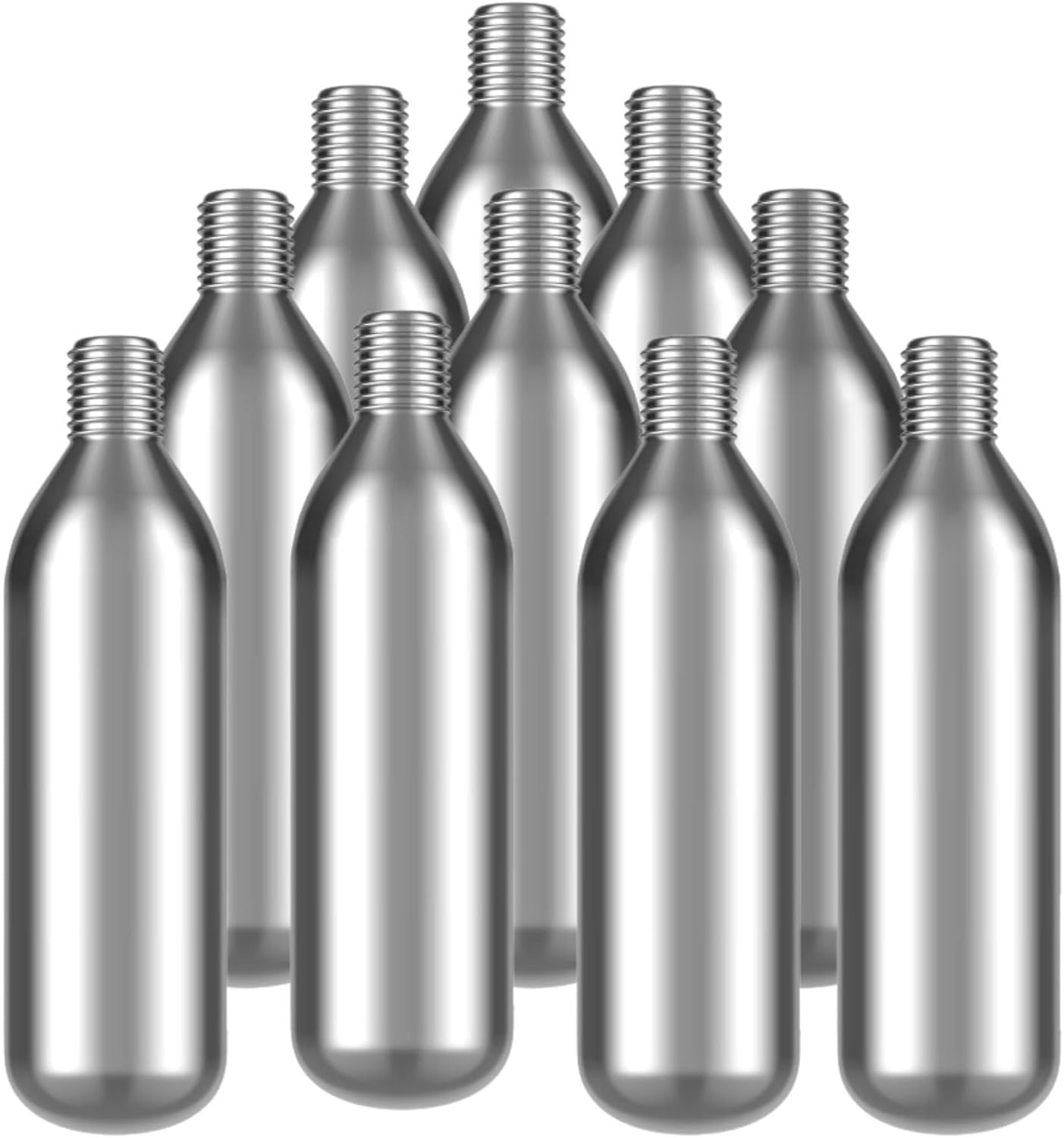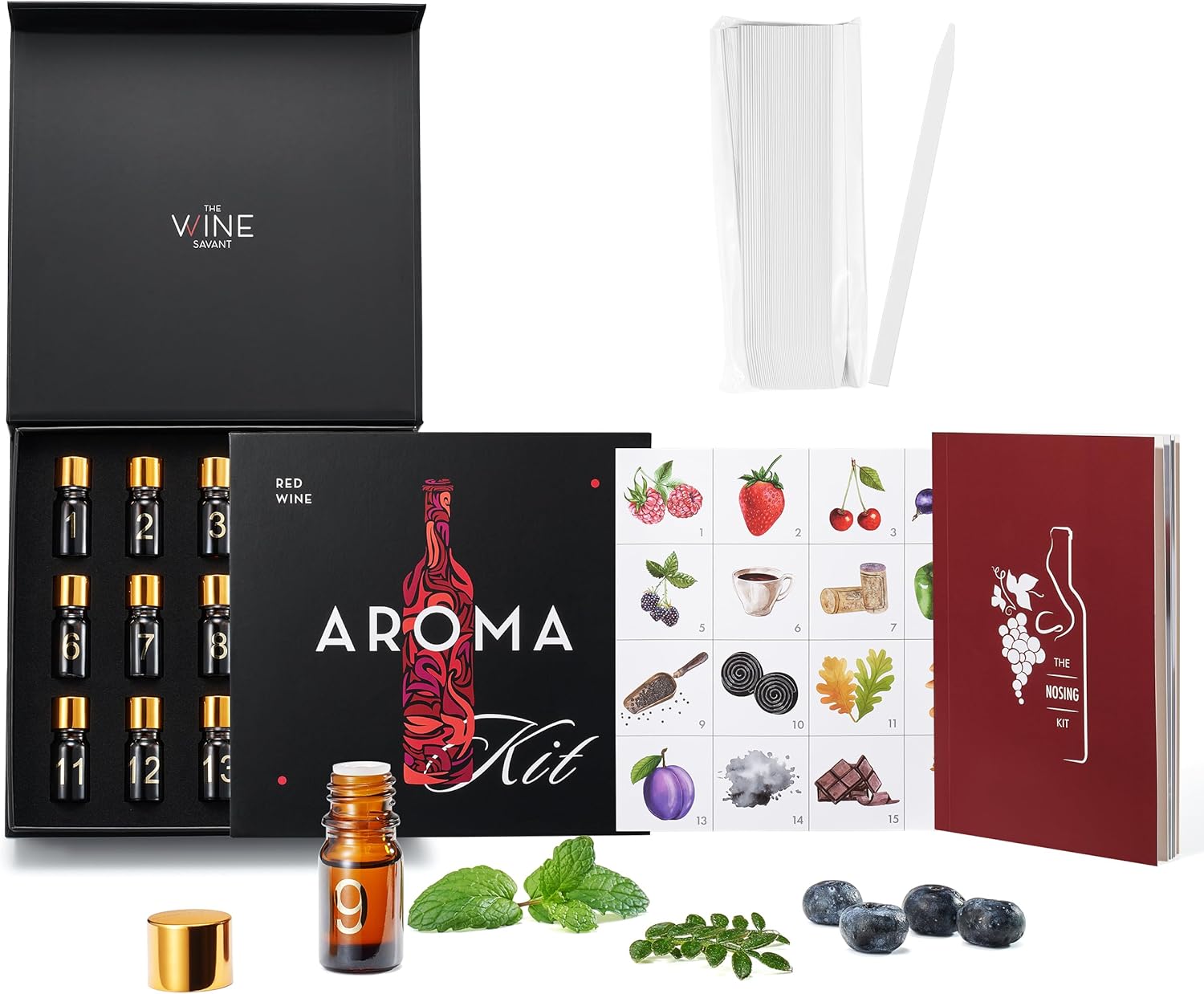The Ultimate Wine Glossary for Beginners
Have you ever been at a dinner party or a wine tasting, nodding along politely while someone describes a wine as “a bit reductive on the nose, but with well-integrated tannins and a lovely malolactic texture”? It can feel like a foreign language, turning something that should be fun and delicious into an intimidating test. As a sommelier, I can tell you a secret: my job isn’t to use big words; it’s to make wine simple, understandable, and enjoyable for everyone. The jargon is only useful if it helps you understand what’s in your glass and, more importantly, helps you find more wines you’ll love.
That’s why I created this guide. This isn’t your average, dusty dictionary. This is a glossary built for beginners, organized the way you actually experience wine—from the grape in the vineyard to the wine in your glass. We’ll break down over 50 essential terms with simple definitions, deeper explanations, and real-world examples. My goal is to demystify the language of wine, giving you the confidence to not only understand what you’re tasting but to talk about it with ease. So let’s get started on your journey from novice to aficionado.
Jump to a Section
Why This Glossary is Your Best Resource
We’ve built this guide on Google’s EEAT framework to provide the most reliable information possible:
- Experience: I am a certified sommelier, but more importantly, I’ve spent thousands of hours teaching beginners about wine. I know the exact terms that cause confusion and have developed simple, effective analogies to explain them.
- Expertise: This guide goes beyond simple definitions to explain the complex science (like malolactic conversion) and agricultural principles (like terroir) in an accessible way.
- Authoritativeness: This glossary is a cornerstone of our wine education series, linking to and reinforcing concepts from our other expert guides, such as our deep dive into organic and natural wines.
- Trustworthiness: All information is independently researched and presented for the sole purpose of education. Our product recommendations are for tools to enhance your learning, with a fully transparent affiliate disclosure.
In the Vineyard: Where It All Begins
Before a wine ever makes it to a bottle, it begins as a humble grape. The flavor potential of that grape is shaped by countless factors in the vineyard. Understanding these terms helps you understand the foundation of a wine’s character.
Appellation
Simple Definition: A legally defined and protected geographical area where grapes for a specific wine are grown.
Deeper Explanation: Think of it like a wine’s official address. An appellation (known as an AVA in the U.S., DOC/G in Italy, AOC in France) is a set of rules that dictate not just *where* the grapes are from, but often *which* grapes can be used and how the wine can be made. This ensures a certain level of quality and consistency. For example, to be called “Napa Valley Cabernet Sauvignon,” the wine must come from the Napa Valley AVA and be made from at least 75% Cabernet Sauvignon grapes. Appellations help guarantee a wine’s authenticity and give you clues about its style.
Biodynamic
Simple Definition: A form of organic farming that treats the vineyard as a single living organism and follows a cosmic calendar.
Deeper Explanation: Biodynamics takes organic farming to the next level. It was developed by philosopher Rudolf Steiner and incorporates holistic and spiritual elements. This includes using special homeopathic preparations (like burying a manure-filled cow horn) to enrich the soil and timing vineyard activities (planting, pruning, harvesting) to the cycles of the moon and planets. While it may sound unusual, the meticulous attention to detail required often results in wines of incredible vibrancy and life. To learn more, explore our complete guide to organic and natural wines. Look for the “Demeter” certification on the label.
Clone
Simple Definition: A grape vine that is a genetic replica of a single “mother” vine, propagated by taking a cutting.
Deeper Explanation: Grapes like Pinot Noir are notoriously genetically unstable and have hundreds of different “clones.” One clone might produce small, concentrated berries perfect for a powerful red wine, while another might produce larger berries better for rosé. Winemakers will often plant several different clones in their vineyard to add layers of complexity to the final wine. It’s a way of fine-tuning the raw material to achieve a specific style.
Organic
Simple Definition: Grapes grown without the use of synthetic pesticides, herbicides, fungicides, or fertilizers.
Deeper Explanation: “Organic” is primarily a farming term. In the U.S., it’s certified by the USDA. For a wine to be labeled “USDA Organic,” it must use certified organic grapes AND have no added sulfites. A more common category is “Made with Organic Grapes,” which means the farming was organic, but the winemaker could add a small amount of sulfites for stability. This guarantees responsible farming practices.
Terroir
Simple Definition: The complete natural environment in which a particular wine is produced, including factors such as the soil, topography, and climate.
Deeper Explanation: This is one of the most important and romantic concepts in wine. It’s the idea that a wine should taste of its specific place. Terroir (pronounced “tare-WAHR”) is the sum of every environmental factor that affects the grapes: the warmth of the sun, the coolness of the evening breeze, the way the rain drains through the rocky soil, the specific microbes in the earth. It’s why a Chardonnay from the cool, chalky soils of Chablis, France, tastes radically different from a Chardonnay from sunny, warm Napa Valley, even if they are made the exact same way. It’s the unique thumbprint of a place on a wine.
Varietal
Simple Definition: The specific type of grape, e.g., Chardonnay, Merlot, or Pinot Noir.
Deeper Explanation: Most wines in the U.S. are named after their primary varietal. To be labeled as a single varietal (like “Cabernet Sauvignon”), U.S. law dictates that the wine must contain at least 75% of that grape. The other 25% can be other grapes used for blending. A wine made from multiple grapes where no single one makes up 75% is often called a “red blend” or “white blend.”
Vineyard
Simple Definition: A plantation of grape-bearing vines grown mainly for winemaking.
Deeper Explanation: The vineyard is where the magic starts. A “single vineyard” wine means that 100% of the grapes came from one specific, named plot of land. These are often more expensive because they are considered to be a pure expression of that vineyard’s specific terroir. “Estate” bottled means the wine was made and bottled at the same property where the grapes were grown, ensuring quality control from start to finish.
Vintage
Simple Definition: The year the grapes were harvested.
Deeper Explanation: The vintage tells you about the weather conditions of a single growing season. A warm, sunny vintage might produce ripe, powerful wines, while a cool, rainy vintage could result in lighter, more acidic wines. For most affordable, everyday wines, vintage doesn’t matter much as they are made to be consistent. For fine, age-worthy wines, the vintage is critical, with some years being declared legendary and others notoriously difficult. If a wine has no vintage listed (e.g., “NV” for Non-Vintage), it means it’s a blend of wines from multiple years, which is common for sparkling wines like Champagne or everyday table wines to ensure a consistent house style. Properly storing vintage wines is crucial, as explained in our guide to how to store wine at home.
In the Winery: From Grape to Wine
Once the grapes are picked, the winemaker’s craft begins. These terms describe the key processes and decisions made in the cellar that shape the final taste, texture, and style of the wine.
Aging
Simple Definition: The process of maturing a wine in barrels, tanks, or bottles to develop more complex flavors.
Deeper Explanation: Aging can refer to two things. First is the time the wine spends at the winery before it’s sold, often in oak barrels or stainless steel tanks. Second is the time it spends in your cellar after you buy it. The process of aging, or “cellaring,” allows a wine’s flavors to evolve from simple fruitiness to more complex notes of earth, spice, and leather. Not all wines are meant to be aged; in fact, over 90% of wine is meant to be drunk within a year or two of its release. Only wines with high levels of acidity, tannin, or sugar have the structure to improve with age. Investing in the right wine cellar essentials is key for successful aging.
Barrel
Simple Definition: A hollow cylindrical container, typically made of oak, used for fermenting and aging wine.
Deeper Explanation: Oak barrels do two main things for a wine. First, they allow a slow, controlled exposure to oxygen, which helps soften the wine’s texture. Second, they impart flavors and tannins from the wood itself. The type of oak (French, American, Hungarian), the size of the barrel, and the level of “toast” (how much the inside is charred) are all critical decisions for the winemaker. A new French oak barrel might add notes of vanilla, baking spice, and cedar, while a neutral (old, used) barrel will soften the wine without adding much flavor. American oak tends to impart more pronounced notes of coconut and dill.
Blend
Simple Definition: A wine made from more than one grape varietal.
Deeper Explanation: Blending is an art form. Winemakers create blends to achieve balance and complexity. One grape might provide structure and tannins (like Cabernet Sauvignon), another might add soft, fruity flavors (like Merlot), and a third might contribute color and spice (like Petit Verdot). The famous wines of Bordeaux and the Rhône Valley in France are classic examples of blends.
Fermentation
Simple Definition: The process where yeast converts grape sugar into alcohol and carbon dioxide (CO2).
Deeper Explanation: This is the fundamental magic trick of winemaking. Without fermentation, you just have grape juice. The yeast can be a commercial strain bought from a lab, chosen for its reliability, or it can be the “native” or “ambient” yeast that naturally exists on the grape skins and in the winery. Natural winemakers exclusively use native yeasts, which they believe contributes to the wine’s unique terroir.
Malolactic Fermentation (MLF)
Simple Definition: A secondary fermentation that converts sharp malic acid into softer, creamier lactic acid.
Deeper Explanation: Don’t let the name scare you! This isn’t about spoilage. Malic acid is the tart acid you find in a green apple. Lactic acid is the softer acid found in milk. This process (often called “malo” or “MLF”) is a choice the winemaker makes. It lowers the wine’s overall acidity and creates a rounder, richer, and more buttery texture. It’s almost always used for red wines and is very common in full-bodied Chardonnays (it’s responsible for that classic buttery note). For crisp, aromatic white wines like Sauvignon Blanc, winemakers will actively block MLF to preserve the wine’s sharp, zesty acidity.
Sulfites (Sulphur Dioxide / SO2)
Simple Definition: A natural byproduct of fermentation that is also often added by winemakers as a preservative and antioxidant.
Deeper Explanation: Sulfites are one of the most misunderstood subjects in wine. SO2 is a natural antioxidant and antibacterial agent that has been used in winemaking for centuries to protect the wine from spoilage and oxidation. A tiny amount is produced naturally during fermentation. Most winemakers add a small extra dose to ensure the wine is stable and can age. The amount is legally regulated and is generally very low (less than in many dried fruits). The “Contains Sulfites” warning on U.S. labels is a government-mandated allergen warning, though a true sulfite allergy is extremely rare.
In the Glass: Tasting & Describing Wine
This is where you get to put your knowledge into practice. These terms will help you articulate what you are smelling, tasting, and feeling, transforming your experience from simply “I like it” to understanding *why* you like it.
Acidity
Simple Definition: The tart, mouth-watering quality of a wine.
Deeper Explanation: Acidity is the backbone of a wine. It’s what makes it taste fresh, crisp, and vibrant. You feel it on the sides of your tongue, and it’s what makes your mouth water. Too little acidity, and a wine tastes flat and flabby. Too much, and it can taste overly sour. A wine with good acidity is refreshing, pairs well with food, and has better potential to age. Think of it as the squeeze of lemon that brightens up a dish.
Aeration
Simple Definition: The process of deliberately exposing wine to oxygen to help it open up.
Deeper Explanation: Exposing a young, tightly wound wine to oxygen helps to soften its tannins and release its aromatic compounds. This is why we swirl wine in a glass. For a more dramatic effect, we use a decanter. The act of pouring the wine into a decanter introduces a large amount of oxygen, which can dramatically improve the taste and smell of a powerful red wine. To see this in action, check out our guide to the best wine decanters.
Aroma / Bouquet
Simple Definition: The smells of a wine. “Aroma” refers to the primary smells from the grape, and “Bouquet” refers to the smells from winemaking and aging.
Deeper Explanation: As a beginner, you can use these terms interchangeably. Technically, aromas are the smells that come directly from the grape varietal—things like fruit (cherry, lemon), floral (rose, violet), and herbal (mint, grass) notes. The bouquet (pronounced “boo-KAY”) develops over time from the winemaking process (like the vanilla from an oak barrel) and aging in the bottle (like the notes of mushroom, leather, or tobacco in an old red wine).
Body
Simple Definition: The perceived weight and richness of a wine in your mouth.
Deeper Explanation: The easiest analogy is milk. Skim milk is light-bodied, whole milk is medium-bodied, and heavy cream is full-bodied. Body in wine is primarily a result of alcohol content, but also sugar and extract. A light-bodied wine feels delicate in your mouth (like a Pinot Grigio). A full-bodied wine feels heavy, rich, and viscous (like a big Napa Cabernet).
Finish
Simple Definition: The impression and flavors that linger in your mouth after you have swallowed or spit out the wine.
Deeper Explanation: The finish is a key indicator of a wine’s quality. A high-quality wine will have a long, pleasant finish where the flavors seem to persist for 30 seconds or even a minute. A simple, lower-quality wine will have a short finish, where the taste disappears almost immediately after you swallow.
Legs / Tears
Simple Definition: The droplets or streaks of wine that run down the side of the glass after swirling.
Deeper Explanation: For a long time, people thought “legs” were a sign of a high-quality wine. In reality, they are simply an indication of alcohol content. It’s a scientific phenomenon called the Marangoni effect, where the alcohol evaporates faster than the water, creating a surface tension that forms the droplets. Thicker, slower-moving legs generally mean the wine is higher in alcohol. It’s interesting to observe but not a reliable indicator of quality. You’ll see them best in one of the best wine glasses for red wine.
Tannin
Simple Definition: A naturally occurring polyphenol found in grape skins, seeds, and stems that creates a drying, astringent sensation in the mouth.
Deeper Explanation: Tannin is a structural component, primarily in red wines. It’s the same compound that makes an over-steeped cup of black tea taste bitter and dry. In wine, tannins can feel like a fine, silky powder or they can be coarse and astringent. It creates a texture that you feel on your gums and teeth. While aggressive tannins can be unpleasant in a young wine, they are crucial for a wine’s ability to age. Over time, tannins polymerize (link together) and soften, contributing to a smoother, more velvety texture in an older wine.
On the Label: Decoding the Bottle
The wine label is a treasure map, but you need to know how to read the symbols. These terms will help you decode the key information on a bottle and make smarter buying decisions.
Cuvée
Simple Definition: A French term for a specific blend or batch of wine.
Deeper Explanation: Cuvée (pronounced “koo-VAY”) can mean several things. It can refer to the first-pressed, highest-quality juice from the grapes. More commonly, you’ll see it on a label to denote a specific wine from a producer who makes several different bottlings. For example, a winery might have its standard “Chardonnay” and then a special “Reserve Cuvée” that is made from the best barrels or a specific block of the vineyard.
Old Vines (Vieilles Vignes)
Simple Definition: Wine made from grapes grown on significantly older-than-average vines.
Deeper Explanation: While there is no legal definition for “old vines,” it generally refers to vines that are 30, 50, or even 100+ years old. As vines age, they produce fewer grapes, but the grapes they do produce are often smaller and much more concentrated in flavor. Wines made from old vines (Vieilles Vignes in French) are typically richer, more complex, and have a greater depth of flavor. It’s usually a sign of a high-quality wine.
Reserve
Simple Definition: A term that implies a wine is of a higher quality, has been aged longer, or is from a special batch.
Deeper Explanation: Be careful with this term! In some parts of the world (like Spain’s “Reserva” or Italy’s “Riserva”), it has a strict legal definition that requires a specific minimum amount of aging. In the United States and many other New World countries, the term “Reserve” has no legal meaning. A winery can use it on any wine they want. While reputable producers use it to denote their best wines, it can also be used purely as a marketing term. Always trust the producer’s reputation over the word “Reserve” alone.
Essential Tools to Bring Your Wine Vocabulary to Life
Reading about these terms is one thing; experiencing them is another. These essential tools will help you actively engage with your wine, train your palate, and make the learning process fun and interactive. They also make fantastic wine gift ideas for her or any budding wine lover.

The Learning Tool: Moleskine “Passion Journal” for Wine
The fastest way to build your vocabulary is to write it down. This Moleskine journal is the perfect companion for your tasting journey. It’s not just a notebook; it’s a structured guide. Each page prompts you to record the wine’s details, and more importantly, provides space and cues for describing its appearance, nose, and palate. Using a journal like this turns passive drinking into active tasting. It forces you to search for the words to describe what you’re experiencing, solidifying the terms in your mind. I tell all my beginner students that a journal is more important than any fancy gadget. It’s the key to tracking your progress and discovering the patterns in your own palate. It’s especially useful when exploring the diverse offerings from the best wine subscription boxes.
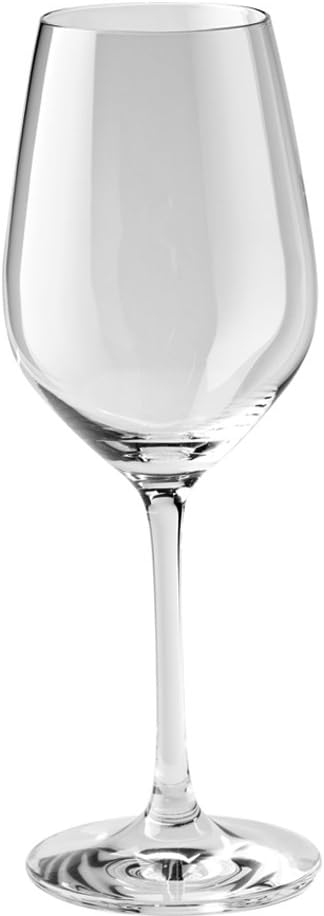
The Sensory Tool: ZWILLING Prédicat All-Purpose Wine Glasses
You can’t properly assess terms like “body,” “aroma,” or “legs” without the right glass. A high-quality, all-purpose crystal glass is an essential tool. These ZWILLING Prédicat glasses are a fantastic choice. Made in Germany, they have a large enough bowl to allow for vigorous swirling (to release the aromas) and a tapered rim to concentrate those aromas for your nose. The thin crystal feels elegant and allows you to clearly see the wine’s color and viscosity. Using a proper glass versus a simple tumbler makes a night-and-day difference in your ability to perceive the nuances in a wine. It’s like upgrading from standard-definition to 4K for your palate.
Conclusion: Go Forth and Taste!
The language of wine may seem complex, but every term is simply a tool to help you better understand and enjoy what’s in your glass. Don’t feel pressured to memorize everything at once. Start by focusing on a few key terms like Acidity, Body, Tannin, and Finish. The next time you open one of the best affordable wines of 2025, try to identify them. The more you taste consciously, the more this language will become second nature. This glossary is your companion on that journey. Refer to it often, be curious, and most importantly, have fun. Cheers!
